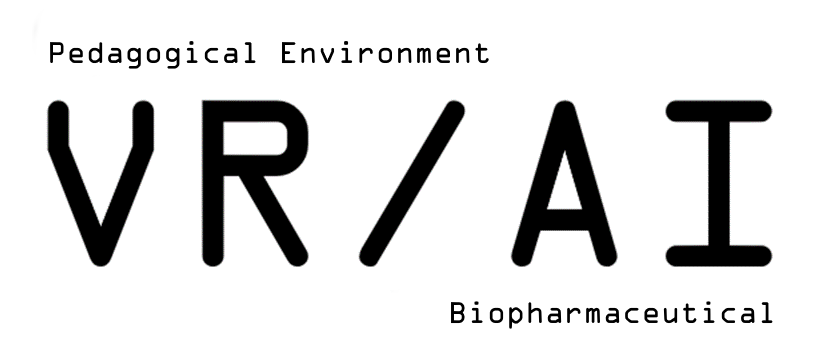BIOREACTOR
A bioreactor is a controlled environment used to cultivate and maintain living cells, tissues, or microorganisms for various applications, such as producing pharmaceuticals, biofuels, or food products. By optimizing conditions like temperature, pH, and oxygen levels, bioreactors enable efficient growth and metabolic processes, resulting in high-quality, consistent, and scalable biological outputs. View All Equipment.
SETUP
The setup of a bioreactor involves several steps and components. Here is a general overview of the setup process:
Choose the appropriate bioreactor: Determine the type of bioreactor (e.g., stirred-tank, airlift, or packed-bed) that is best suited for your application, considering factors such as scale, type of microorganism or cell culture, and desired products.
Assemble the bioreactor: Follow the manufacturer’s instructions to assemble the bioreactor components, including the vessel, agitator, sparger, sensors, and sampling ports.
Sterilize the bioreactor: It’s crucial to maintain a sterile environment to prevent contamination of your culture. Sterilize the bioreactor and all associated equipment, such as tubing and connectors, using methods like autoclaving, dry heat, or chemical sterilization, depending on the materials and equipment.
Prepare the growth medium: Mix the appropriate nutrients and chemicals needed for the growth of your specific microorganism or cell culture. Be sure to follow any specific guidelines for the type of culture you’re working with. Filter-sterilize the medium to remove any potential contaminants.
Set up the control system: Configure the control system for your bioreactor, which may include sensors for monitoring temperature, pH, dissolved oxygen, and other important parameters. Ensure that the control system can automatically adjust the bioreactor’s conditions as needed to maintain optimal growth conditions.
Inoculate the bioreactor: Transfer aseptically an appropriate volume of the inoculum (starter culture) into the bioreactor. Make sure the inoculum is healthy and free of contaminants. If necessary, you may need to perform a series of pre-cultures to expand the initial culture to the required volume.
Initiate operation: Start the bioreactor by activating the agitation, aeration, and any other necessary systems. Continuously monitor the critical parameters (e.g., temperature, pH, and dissolved oxygen) to ensure that they remain within the optimal range for your specific culture.
Sampling and analysis: Periodically take samples from the bioreactor to monitor the growth of your culture, assess product formation, and evaluate overall bioprocess performance. Use appropriate analytical techniques to analyze the samples for cell density, nutrient consumption, and product formation.
Harvesting: Once the culture has reached the desired growth or product formation stage, harvest the culture or product from the bioreactor, depending on your application. This may involve centrifugation, filtration, or other separation methods.
Cleaning and maintenance: After each run, clean and sterilize the bioreactor and all associated equipment to ensure that the system remains free of contaminants. Perform routine maintenance on the bioreactor components, sensors, and control system to ensure their continued reliability and accuracy.
Please note that this is a general outline, and the specific steps and procedures for setting up a bioreactor may vary depending on the manufacturer, model, and application. Always consult the manufacturer’s guidelines and any applicable safety procedures before attempting to set up and operate a bioreactor.
ERROR CODES
Bioreactors can experience various error conditions during operation, which may affect the efficiency and quality of the biological process. Some common error conditions include:
Contamination: The presence of unwanted microorganisms, chemicals, or particulates in the bioreactor can lead to reduced productivity, altered product characteristics, or even complete failure of the process. Contamination can occur during inoculation, medium preparation, or sampling if proper aseptic techniques are not followed.
Temperature deviations: Maintaining the optimal temperature for the specific microorganism or cell culture is critical. Temperature deviations can result from malfunctioning heating/cooling systems or improper control settings, potentially affecting growth rates, product formation, and overall process performance.
pH imbalances: The pH of the growth medium should be within the optimal range for the specific organism or culture. Deviations from the optimal pH can negatively affect cell growth, metabolism, and product formation. pH imbalances can result from inadequate control systems, errors in medium preparation, or accumulation of acidic or basic metabolic byproducts.
Dissolved oxygen (DO) limitations: Adequate DO levels are essential for aerobic processes. Low DO levels can cause reduced growth rates, decreased productivity, or even cell death. DO limitations may result from inadequate aeration, high cell densities, or improper control of agitation and sparging systems.
Agitation issues: Inadequate or excessive agitation can cause various problems, including insufficient mixing, cell damage, or formation of air bubbles. Agitation issues may result from mechanical failures, improper impeller design, or incorrect operating parameters.
Nutrient limitations: The depletion of essential nutrients can limit cell growth and productivity. Monitoring and controlling nutrient levels are crucial to maintaining optimal bioprocess performance. Nutrient limitations can result from errors in medium preparation or insufficient feeding strategies.
Foam formation: Excessive foam formation in the bioreactor can cause operational issues such as reduced mass transfer, overflow, or clogging of exhaust filters. Foam can be generated by the presence of surface-active compounds or excessive agitation. Antifoam agents or mechanical foam breakers may be used to control foam formation.
Sensor and control system errors: Malfunctioning sensors, control systems, or communication issues can lead to inaccurate measurements or improper control of process parameters. Regular maintenance, calibration, and verification of sensors and control systems are essential to ensure accurate and reliable operation.
Leaks or clogs: Leaks in the bioreactor vessel, tubing, or connections can introduce contaminants or cause loss of culture, medium, or product. Clogs in tubing, filters, or other components can disrupt the flow of fluids and gases, affecting the overall process performance.
Equipment failure: Mechanical or electrical failures of components such as agitators, pumps, or heating/cooling systems can cause disruptions in the bioprocess and may require immediate attention to avoid process failure.
To minimize the occurrence of error conditions, it is essential to follow proper operating procedures, implement preventive maintenance schedules, and closely monitor the bioprocess parameters throughout the operation.
